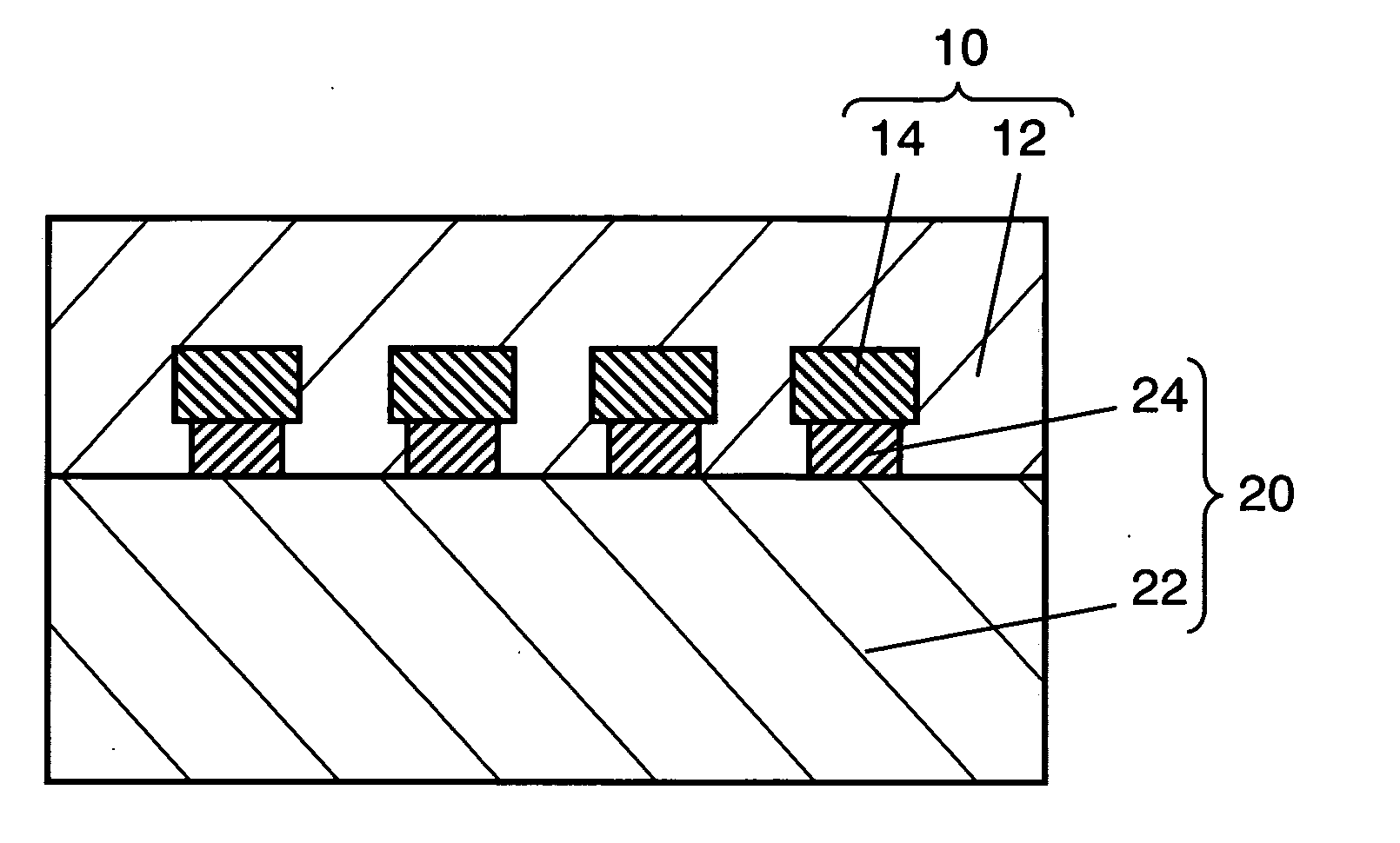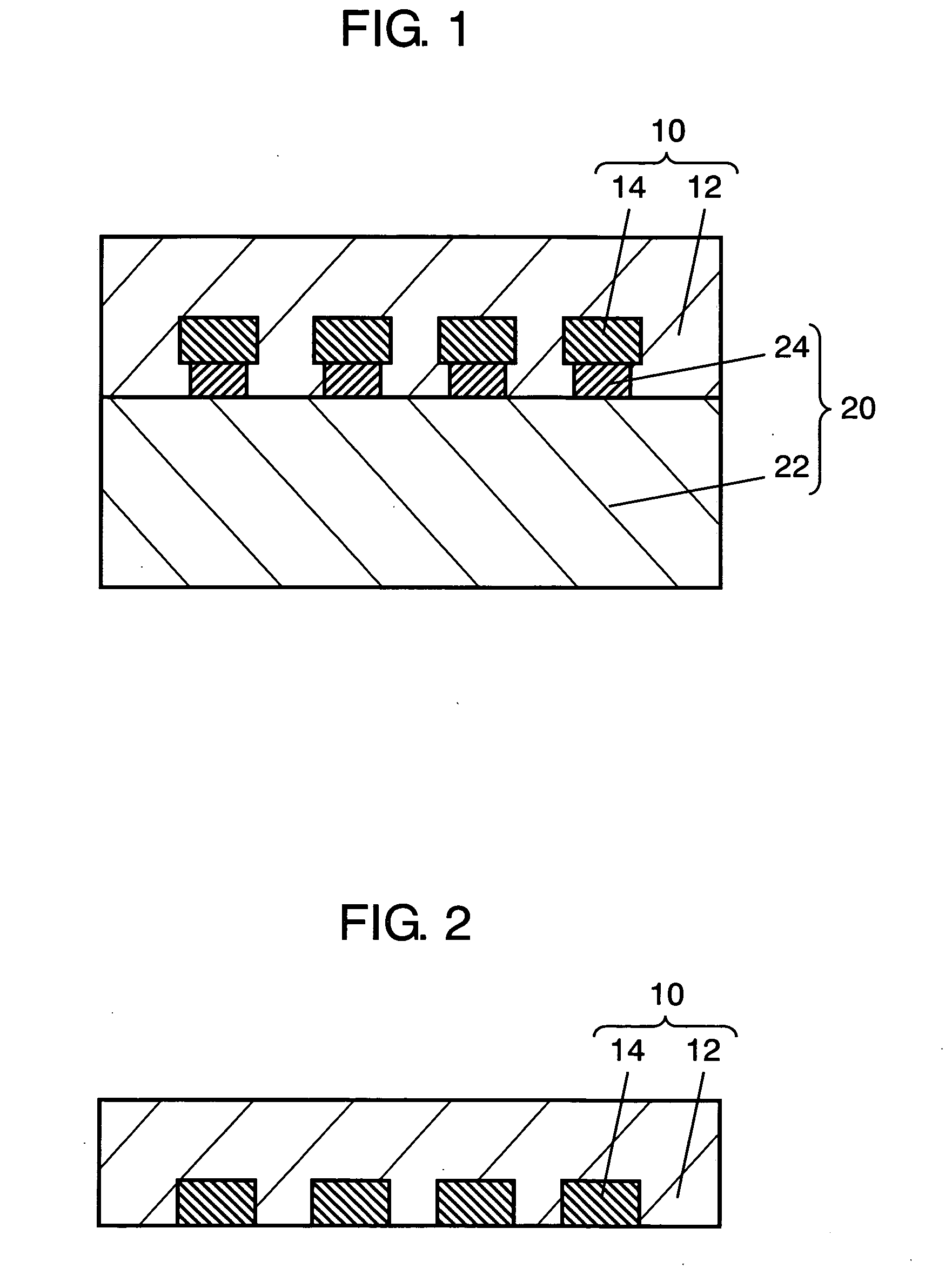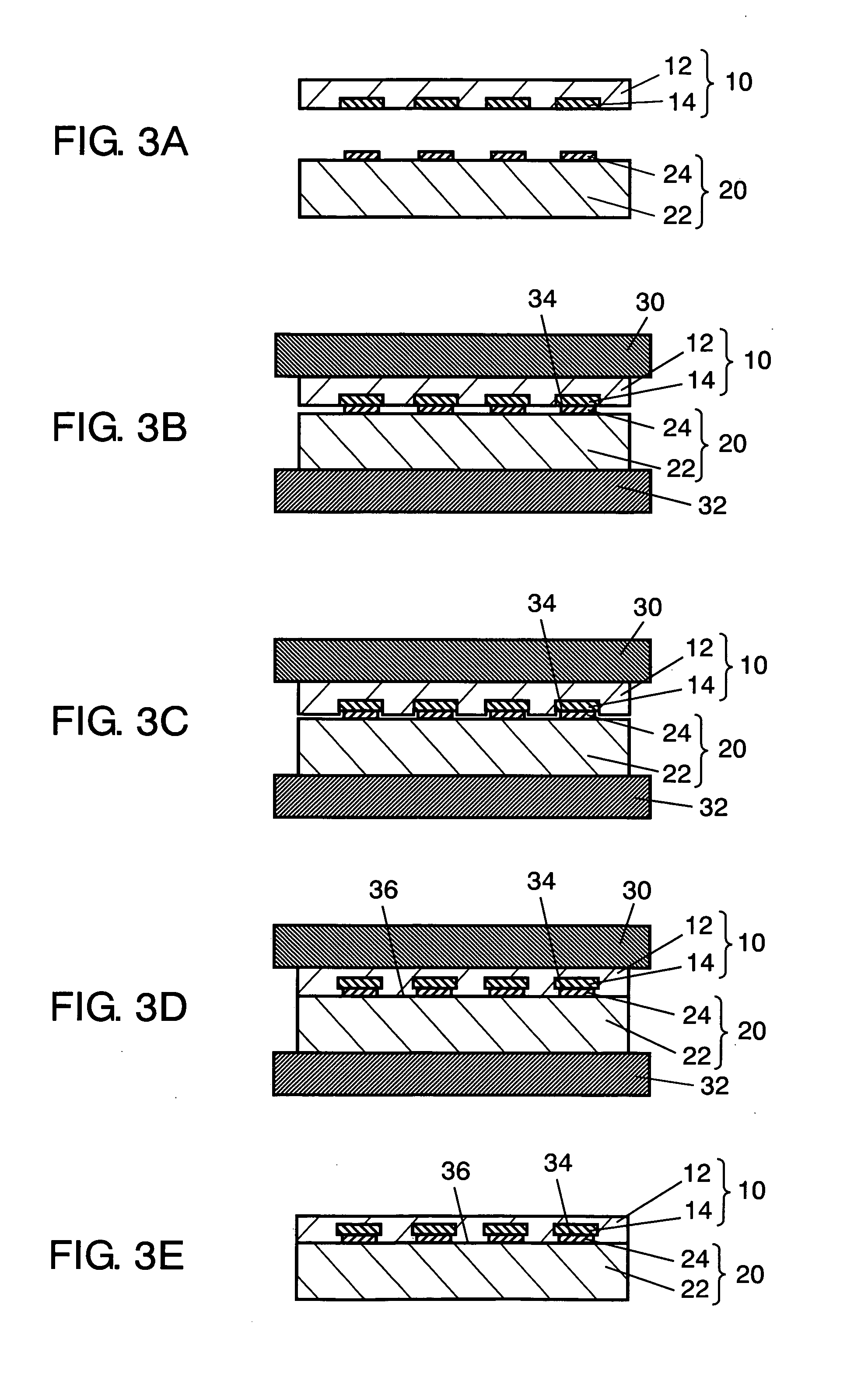Connecting structure of circuit board and method for manufacturing the same
a technology of connecting structure and circuit board, which is applied in the direction of fixed connections, dielectric characteristics, thermoplastic polymer dielectrics, etc., can solve the problems of large pressing power required for being collapsed and expanded, the difficulty of reducing the increase of the etc., to achieve the effect of reducing the electric connection resistance of the contact portion, high precision and easy adjustment of positions
- Summary
- Abstract
- Description
- Claims
- Application Information
AI Technical Summary
Benefits of technology
Problems solved by technology
Method used
Image
Examples
first embodiment
[0037]FIG. 1 is a sectional view of a main part of a connection portion showing a connecting structure of a circuit board according to a first embodiment of the present invention. In the configuration of the connecting structure of the circuit board of this embodiment, first circuit board 10 and second circuit board 20 are electrically connected to each other via first conductor patterns 14 and second conductor patterns 24, and first resin base material 12 of first circuit board 10 and second resin base material 22 of second circuit board 20 are bonded to each other. This bonding is carried out by thermal fusing of resin base material 12, when a material having a thermoplastic property and a thermal fusing property is used for first resin base material 12 of first circuit board 10.
[0038]FIG. 2 is a sectional view of a connection portion of first circuit board 10 shown in FIG. 1. In first circuit board 10, first conductor patterns 14, which are connection portions, are formed so tha...
second embodiment
[0072]FIGS. 6A and 6B are sectional views showing main steps of a method for manufacturing a connecting structure of a circuit board according to a second embodiment of the present invention. FIG. 6A is a sectional view showing first circuit board 40. FIG. 6B is a sectional view showing a state in which first circuit board 40 and second circuit board 20 are pressed until first conductor patterns 44 and second conductor patterns 24 are brought into contact with each other. Note here that an upper heating pressing plate and a lower heating pressing plate for pressing are not shown.
[0073] The connecting structure of the circuit board of this embodiment is different from that of the first embodiment in the structures of first conductor patterns 44 of first circuit board 40. That is to say, in this embodiment, first conductor patterns 44 of first circuit board 40 are embedded in first resin base material 42, and surface 48 of first conductor pattern is present at the inner side from the...
third embodiment
[0084]FIGS. 7A and 7B are sectional view showing main steps of a method for manufacturing a connecting structure of a circuit board according to a third embodiment of the present invention.
[0085]FIG. 7A is a sectional view showing first circuit board 52. FIG. 7B is a sectional view showing a state in which first circuit board 52 and second circuit board 20 are pressed until first conductor patterns 56 and second conductor patterns 24 are brought into contact with each other. Note here that an upper heating pressing plate and a lower heating pressing plate for pressing are not shown.
[0086] The connecting structure of the circuit board of this embodiment is different from that of the first embodiment in the structure of first conductor patterns 56 of first circuit board 52. In this embodiment, as shown in FIG. 7A, first conductor patterns 56 of first circuit board 52 are formed on the surface of first resin base material 54 and are not embedded in first resin base material 54. There...
PUM
| Property | Measurement | Unit |
|---|---|---|
| temperature | aaaaa | aaaaa |
| softening temperature | aaaaa | aaaaa |
| softening temperature | aaaaa | aaaaa |
Abstract
Description
Claims
Application Information
 Login to View More
Login to View More - R&D
- Intellectual Property
- Life Sciences
- Materials
- Tech Scout
- Unparalleled Data Quality
- Higher Quality Content
- 60% Fewer Hallucinations
Browse by: Latest US Patents, China's latest patents, Technical Efficacy Thesaurus, Application Domain, Technology Topic, Popular Technical Reports.
© 2025 PatSnap. All rights reserved.Legal|Privacy policy|Modern Slavery Act Transparency Statement|Sitemap|About US| Contact US: help@patsnap.com



